As part of a series of interviews with faculty, researchers and students who are participants in our Muslim World Manuscripts (MWM) project, I sat down with Sadegh Ansari, a graduate student in the Department of History at Columbia University, and asked him a few questions about his dissertation and his use of the MWM collection. Sadegh was part of an initial cohort of students who initiated and advocated for the MWM project at Columbia. Here is what Sadegh told me:
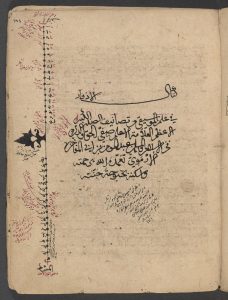

Q: Sadegh, Welcome. Your dissertation has an intriguing title: “Pythagoras in Baghdad: Ṣafī al-Dīn al-Urmawī and the Science of Music in the Medieval Islamic World”. Can you please tell us who was al-Urmawī?
Yes, sure. In fact, little is known about al-Urmawī’s early life. His name suggests that he might have been from the city of Urmia [modern day Northwestern Iran, in the Azerbaijan region]. As a young man, he migrated to Baghdad during the reign of the last Abbasid Caliph al-Mustaʻṣim (r. 1242-1258 ce). Al Urmawi was well educated in a whole host of disciplines, including Arabic language and literature, history, penmanship, calligraphy, Shāfiʻī jurisprudence, and most of all, music! His credentials secured him multiple important positions during the Abbasid caliphate, such as the copyist of the newly-built famous library of al-Mustaʻṣim, the Head of the Chancery (dīwān al-inshāʼ) of Baghdad, and the Head of the Administration for Endowments and Foundations (naẓarīyat al-waqf). He occupied the latter post until 1267 ce, when Naṣīr al-Dīn al-Ṭūsī (d. 1274ce), the famous 13th century astronomer, succeeded him. This gives you a sense of what late Abbasid culture was like! Prominent thinkers, scientists, astronomers, mathematicians as copyists and head of Libraries, endowment foundations and administrative writing units!
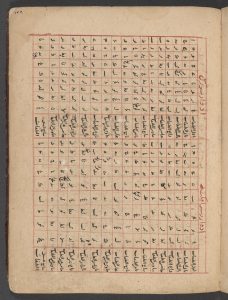
With respect to music, Al-Urmawī became famous as a musician towards the end of al-Mustaʻṣim’s reign, when one of his students, who was a singer at the caliph’s court, sang one of al Urmawi’ compositions. The story goes that the caliph asked the singer who the composer of the song was and she credited her teacher, al-Urmawī, who at the time was at the service of the court in the capacity of copyist and librarian. Al-Urmawī was subsequently asked to join the inner circle of the caliph as a musician and boon companion (nadīm). Even after the fall of the Abbasid Caliphate, al-Urmawī’s multiple talents and erudition secured him continuous employment with the Mongol Ilkhanid administration. His musical prowess also helped him survive the fall of the Abbasid caliphate to the Mongol ruler Hülegü. According to al-Urmawī himself, he succeeded in convincing Hülegü to spare the lives of al-Urmawī’s entire neighborhood through a combination of ransom payments and musical performances during which he literally put the Mongol ruler to sleep with the magic of his music! Here you go for the power of music and ideas! (laughs)
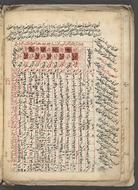
Whether we want to believe this account or not, there is no question that after the fall of Baghdad, al-Urmawī preserved his status, at least for some time. He attached himself to the Mongol court of Baghdad and the Juwayni brothers, who ruled the city on behalf of the Mongols. It was through this connection that he came to tutor Shams al-Dīn Juwayni’s (d. 1285 ce) son, Sharaf al-Dīn Hārūn, for whom he composed his influential musical treatise Al-Risālah al-Sharafīyah. He was also in contact with Naṣir al-Dīn al-Ṭūsī at whose request he composed Kitāb al-Adwār (of which RBML has a copy), according to certain extant manuscripts of this treatise. Unfortunately for al-Urmawī, toward the end of the 13thcentury, the star of his new patrons, the Juwayni family, waned when many of them, including Shams al-Dīn himself, were executed by their Mongol overlords. For al-Urmawī, this meant the loss of his positions and sources of income, which led to immense hardship at the end of his life. He died in 1294 ce in the city of Baghdad, while under arrest for in fact a very small debt which he was not able to repay.

Q: What are some of the works that al- Urmawi left us and why are they important to you as a scholar?
Al-Urmawī’s legacy as a scholar of music lasted for quite a few centuries after his death. I think that his two treatises on music (Kitab al adwar and Al-Risālah al-Sharafīyah) are among the most influential on the subject written in the medieval Islamic world, as can be seen from the sheer number of the manuscripts still extant and their vast geographical dispersion. Between the 13th century ce, and the mid-19th century ce, many scholars from diverse parts of the Islamic world engaged with his thought, particularly those who wanted to educate themselves in the mathematical sciences. Our main evidence for this claim comes from the catalogs of manuscripts held in libraries around the world, but mainly in Iran, Turkey, England, France, and Germany. There is evidence, based on the comparative numbers of surviving musical manuscripts by al Urmawi compared to other scientists and musicians, that al-Urmawī was quite influential. For instance, we have twenty-six manuscripts held in different libraries in Iran, and thirty in Turkey. An educated guess based on current evidence found in catalogs of musical treatises in the Islamic world puts the boundaries of where al-Urmawī had greatest influence at the Levant, Iraq, modern-day Turkey, modern-day Iran, Transoxiana, and cities in the orbits of the Mughal empire of India, including Herat and Delhi. It is in light of the popularity (and likely influence) of al-Urmawī’s works that I have chosen his two treatises, their commentaries, and the marginal notes of their manuscripts as the main focal point of my dissertation.
Q: I think many people nowadays would be surprised to hear that there was a time when music was considered a branch of pure science. How was the relation between science and music perceived in the time of Safi al-Din al-Urmawi in medieval Baghdad, and what led your interest in this topic?
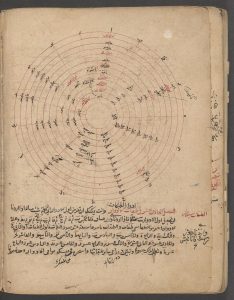
Yes, indeed! While widely considered to be an art today, music in the medieval Islamic world was in fact categorized as a branch of mathematical science, alongside arithmetic, geometry, and astronomy. Some philosophers and scholars of music went as far as linking music with medicine and astrology, as part of an interconnected web of cosmological knowledge! In my dissertation ,I try to explore and unravel how during this period, the science of music, as a distinct body of knowledge, was appropriated from its Greek origins, reproduced and expanded on, integrated into its new surroundings, and disseminated throughout Islamic cultures and societies, throughout the Eastern Islamic lands from Baghdad to India and Transoxiana, and from the early medieval to the early modern times (9th-16th centuries). One interesting aspect of my exploration suggests that this scientific/musical knowledge was often produced through the patronage of both the ruling and the urban elite classes and was preserved and transmitted by scholars of the mathematical disciplines through manuscripts and scribal culture, not by musicians, or people who performed this music necessarily, but mostly by people we would consider nowadays as mathematicians! What I try to do in my dissertation is focus on the marginalia recorded in several surviving manuscripts, to gather evidence of how scholars in the Islamic world engaged with previous scientific theories, what they added to them, and how they went on to refine and formulate their own views and scientific theories of music. Manuscripts are extremely helpful this way, and the type of information handed down to us can be gathered at several levels: of course, in the writings themselves, in the ideas and the content, including the marginalia, but sometimes, also through the manuscript itself as an object. Here material culture becomes an interesting resource of valuable information. To give an example of the latter type of information that material culture can contribute to our understanding of a field, take our own Columbia Library Islamic manuscript collection. We have there a manuscript by al Urmawi, namely MS Or 306. –I am not sure whether I will end up using it in my dissertation– but regardless of that fact, MS Or 306 is an important manuscript for several reasons, not least of which is the fact that it is a compilation of several important scientific treatises composed by prominent pre-modern astronomers, mathematicians, and scholars of optics, bound together. It also includes the treatise by al Urmawi on music, thus offering us yet another example of how closely music was associated with science. This compilation may have well been completed or commissioned by a learned scientist or a learned member of society who chose to compile all these works together to the benefit of their own education, or that of their children.
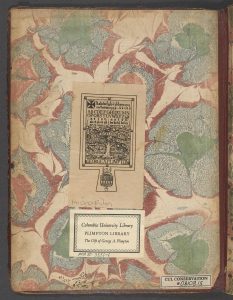
The testimonies of the continued interest in Islamic science and knowledge production around Islamic science past that Golden Age, as recorded in Islamic manuscripts scattered around the world, in fact goes against many of our received stereotypes, regarding for example the fact that Islamic science was simply a matter of translation and perhaps of minor commentary on the Greeks rather than a valid and exuberant critical body of knowledge, or that past the 14th, 15th c. no real knowledge production around science happened in Islamic societies. These are obviously false assumptions, clearly refuted by the extraordinary body of knowledge recorded in Islamic scribal cultures across the world. Neither assumption is true, as manuscripts tell us.
Q: You have taught using some manuscripts from our collections: what makes our collection interesting/peculiar? What in your view is the added scholarly and pedagogical value of teaching with material culture?

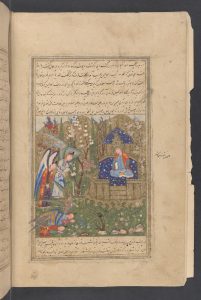
In the Spring of 2019, I taught a course on the history of science in the pre-modern Islamic world. The course addressed a variety of scientific disciplines, and tackled conceptual questions: what are the boundaries, how to define these disciplines, how they related to each other, why they were considered scientific disciplines, and how they were transmitted. We got a chance to go to RBML and actually see a few manuscripts and talk about them. This was a great opportunity for me and my students. We got to actually see how pre-modern scholars in the Islamic world recorded their scientific knowledge and how they transmitted it to the future generations. Some of my students were surprised to see how little “mathematics” a mathematical manuscript contained. Nowadays, we are so accustomed to our idea of what mathematics is that we don’t realize the current format of mathematical writing is the product of a historical process. Even though mathematical discussions were very complex and rich in the pre-modern world, they included more words than they did numbers. Equations were explained verbally instead of being represented through mathematical formulae. It was interesting to see how students stepped out of their own conceptions of mathematics and tried to see it from the perspective of a pre-modern scholar. This is a particular point of strength in our collection, since RBML owns many mathematical manuscripts, some of which are in fact unica. At the same time, we had the great opportunity to compare these scientific manuscripts with non-scientific items in our collection as well. RBML owns a number of beautifully illustrated literary works from copies of Firdawsi’s Shahnama to a manuscript of Qiṣaṣ al-anbiyaʼ (X892.8 Q1 Q). Comparing these literary works with scientific manuscripts which were practically personal handbooks used by scholars was an illuminating exercise both for me and my students, in realizing the different kinds of efforts that had gone into each manuscript depending on their functions.
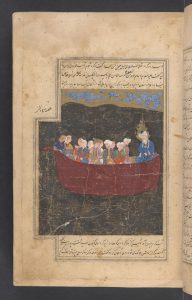

Q: How can we teach the core curriculum in an inclusive way through Islamic science or through using manuscripts from the Columbia collection?
I currently have the honor of working as a guest editor, along with some colleagues and friends, including Zainab Azarbadegan, for a special issue of the journal of Philological Encounters focusing on the MWM project and our collection at RBML. I am also co-authoring a paper for the special issue with my colleague and friend Trevor Brabyn, on a manuscript in our collection about astronomy. In fact, it was Trevor who brought this manuscript to my attention. The manuscript is a collection of treatises on astronomy compiled in early 19th C. for a Qajar prince in Iran, including treatises on Ptolemaic astronomy composed by great pre-modern astronomers of the Islamic world like al-Ṭūsī and Birjandī. What gained our attention, however, is a treatise on Copernican astronomy written in Persian. It is one of the earliest examples of such treatises in Iran, even though similar treatises in Persian can be found from late 18th C. India. In fact, there is ample evidence within the manuscript that this particular treatise was based on a Persian translation that came from India. It is a testament to the fact that Iranian intellectuals of the early 19th c. were interested in and aware of modern science long before “modernization” efforts of the mid to late 19th c.
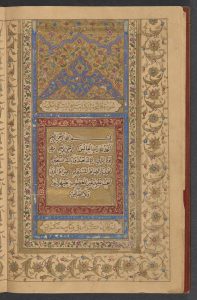
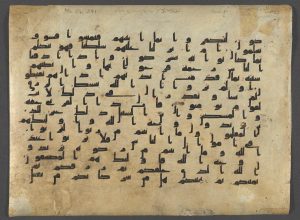
For inquiries regarding the Muslim World Manuscript project at Columbia, please contact: Jane Siegel: Librarian for Rare Books & Bibliographic Services: RBML: jane.siegel@columbia.edu; Peter Magierski: Middle East and Islamic Studies Librarian: pm2650@columbia.edu, Kaoukab Chebaro: Global Studies, Head: kc3287@ columbia.edu
Kaoukab Chebaro, Global Studies, Head, Columbia University Libraries